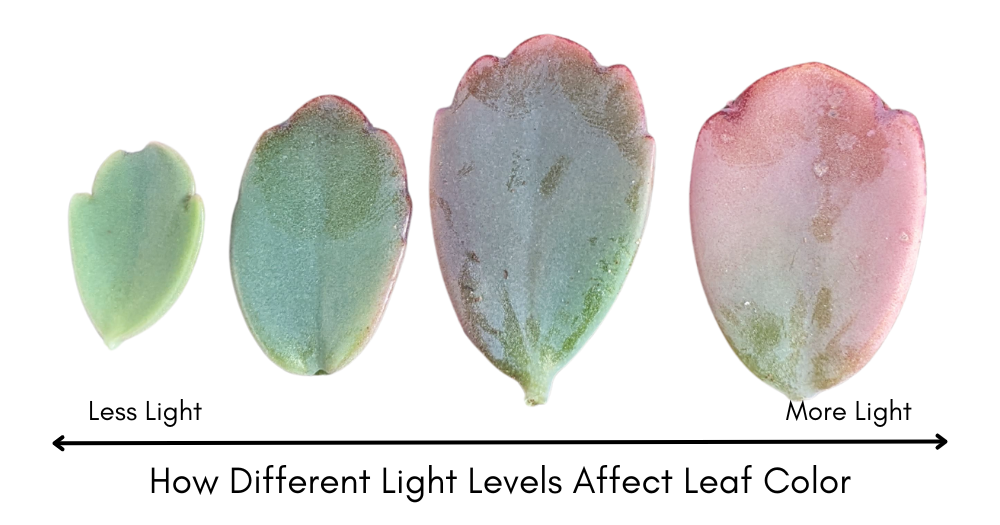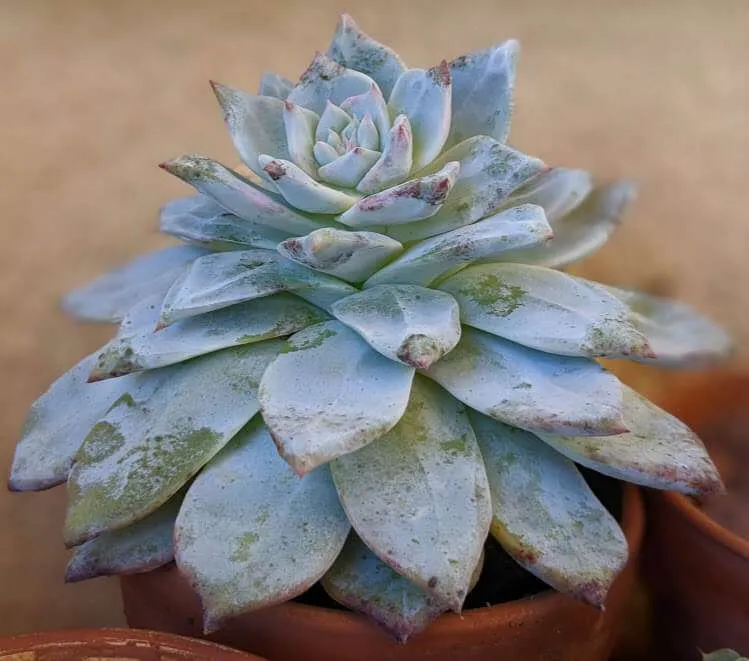Succulent Light Guide:
One of the most critical factors in ensuring healthy and vibrant growth in these plants is providing the right amount of sunlight. In this comprehensive guide, we’ll cover everything you need to know about succulents, cacti, and their light needs, from understanding etiolation to growing your plants under artificial light. Let’s light it up!

Succulents Need Sunlight
Importance of Sunlight for Succulents
Sunlight is essential for the survival and growth of all plants, including succulents. It provides the energy needed for photosynthesis, the process by which plants convert light energy into chemical energy to fuel their growth. Without enough sunlight, your succulent may become weak, discolored, and susceptible to disease.
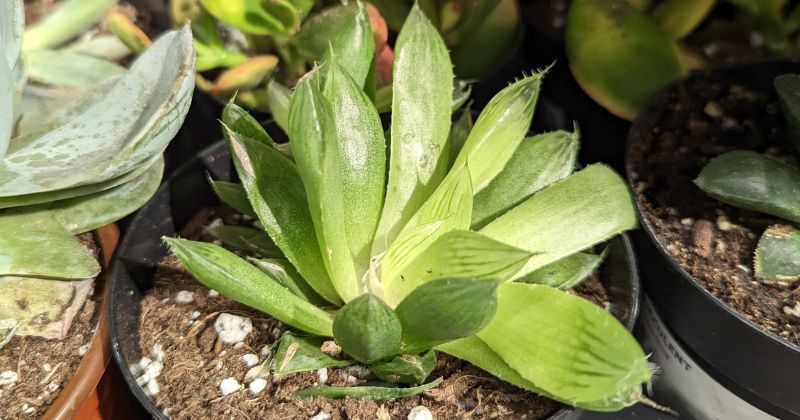
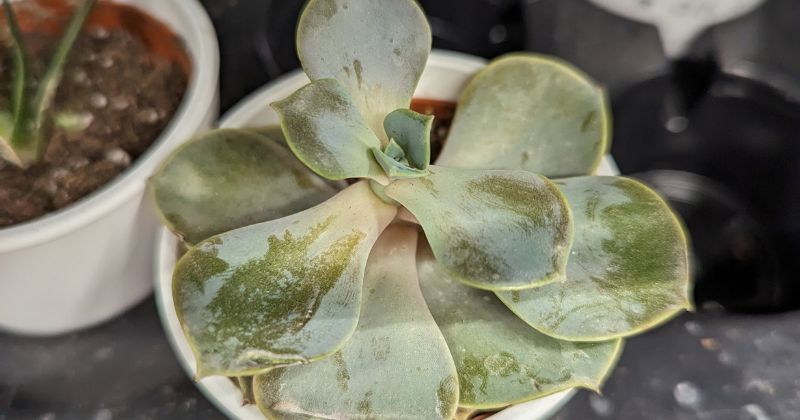
How Much Sunlight Do Succulents Need?
Succulents need a minimum of 6-8 hours of sunlight per day to thrive. However, the specific light requirements may vary depending on the type of succulent you’re growing. Always research the specific sunlight needs of your plant to ensure it gets the proper amount of light.
Understanding Etiolation
What is Etiolation?
Etiolation is a term used to describe the elongation of a plant’s stem or overall growth that occurs when it is not receiving enough light.
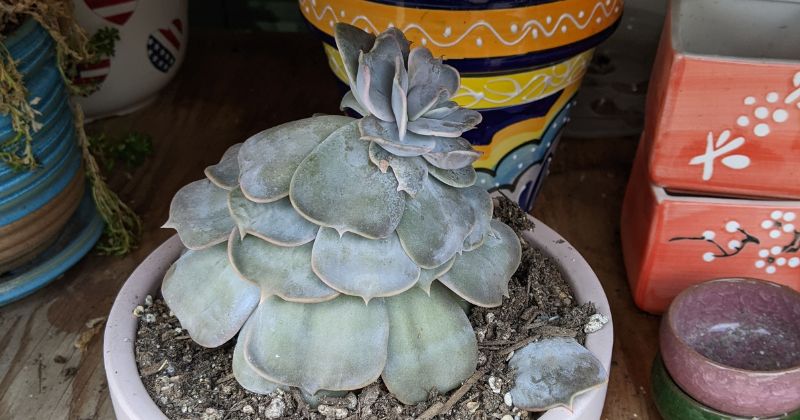
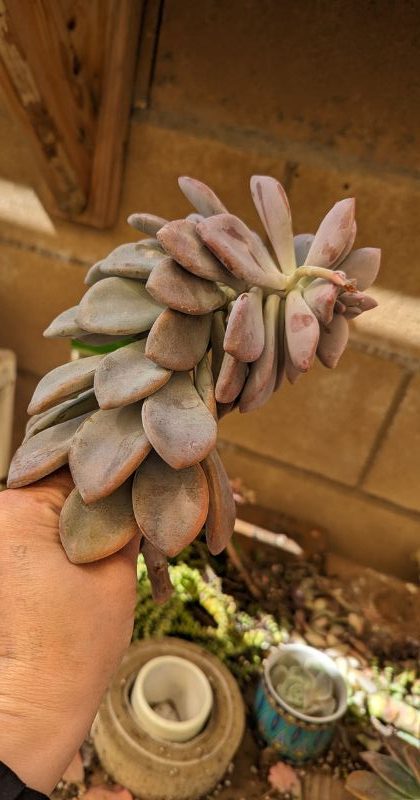
What Does Etiolation Look Like?
Etiolated plants become weak and spindly, with pale leaves that are widely spaced. Leaves bending down or flattening is usually the first sign that a succulent is not getting enough light. This is especially noticeable in rosette shaped succulents like echeveria or sempervivum. Their reaction is to increase the amount of exposed surface area in order to receive more light.
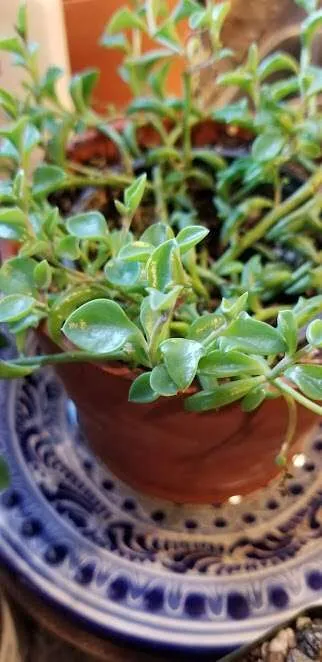
Causes of Etiolation in Succulents
The primary cause of etiolation in succulents is insufficient sunlight. When a plant doesn’t receive enough light, it stretches towards the light source in an attempt to maximize its exposure. This can lead to weak, leggy growth and an overall unhealthy appearance.
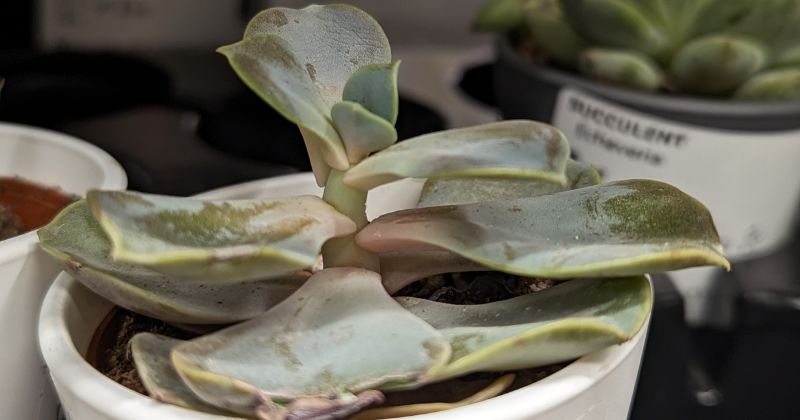
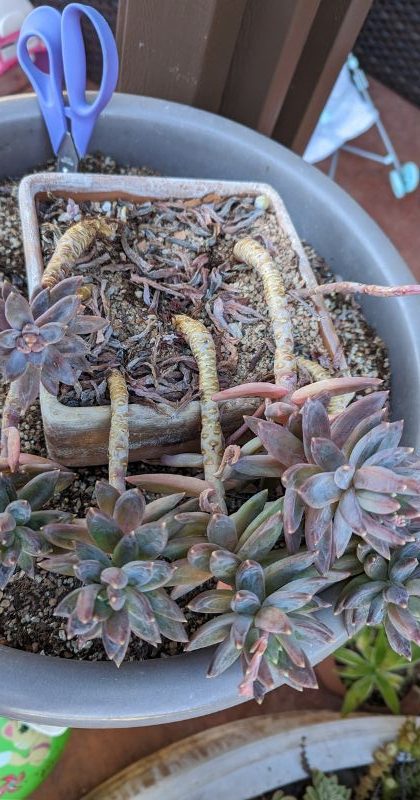
You might also be watering your succulents too much.
Etiolated succulents grow really fast. Could your watering habits be contributing to etiolation? If you have etiolated succulents, try holding back their water to slow the stretching.
How to Fix Etiolated Succulents
To fix etiolated succulents, first, move them to a location with more sunlight or provide supplemental artificial light. Prune back the stretched growth and propagate the healthy cuttings, if desired. Monitor your plant’s light needs and adjust as necessary to prevent future etiolation.
Succulents Stretching
Signs of Succulents Stretching
Succulent stretching is the most common sign of etiolation. Stretched succulents display long, thin stems with widely spaced leaves, giving the plant an overall “stretched” appearance. The leaves may also become pale and lose their vibrant color. Since energy has to travel farther to reach the ends of the succulent, it makes the plant very weak and more susceptible to pests and diseases.
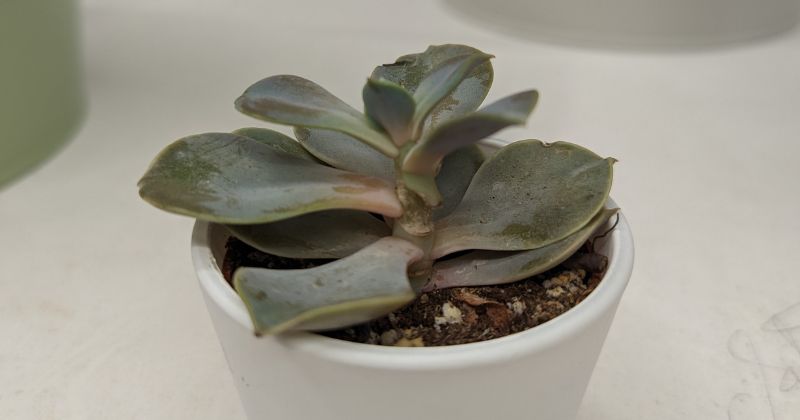
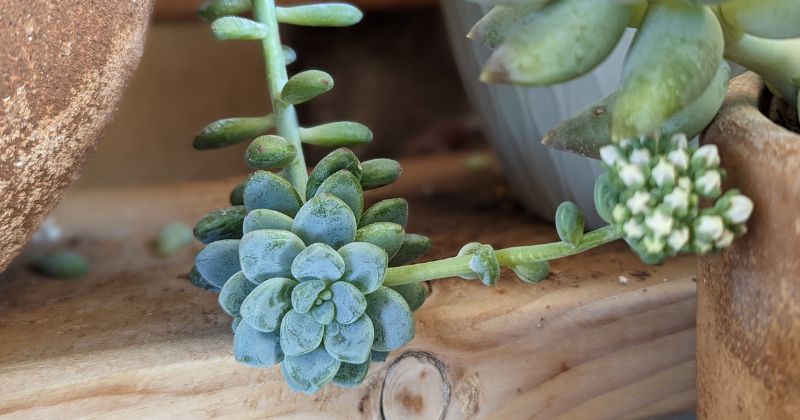
How to Prevent Succulent Stretching
To prevent succulent stretching, provide your plants with adequate sunlight and rotate them regularly to ensure all sides receive equal light exposure. If your home doesn’t have enough natural light, consider using artificial grow lights to supplement your succulent’s light needs.
Propagating Leggy Succulents
Methods of Propagation
You can propagate leggy succulents by stem cuttings or leaf cuttings. For stem cuttings, snip off a healthy section of the stem, let it dry for a few days, and then place it in well-draining soil. For leaf cuttings, gently twist off a healthy leaf, let it dry for a few days, and then place it on top of well-draining soil.
Tips for Successful Propagation
Ensure your cutting tools are clean and sharp to avoid damaging the plant or introducing disease. Provide your cuttings with a well-draining soil mix, and keep the soil slightly moist but not wet. Place the cuttings in bright, indirect light until new roots form, and then gradually transition them to more direct sunlight.
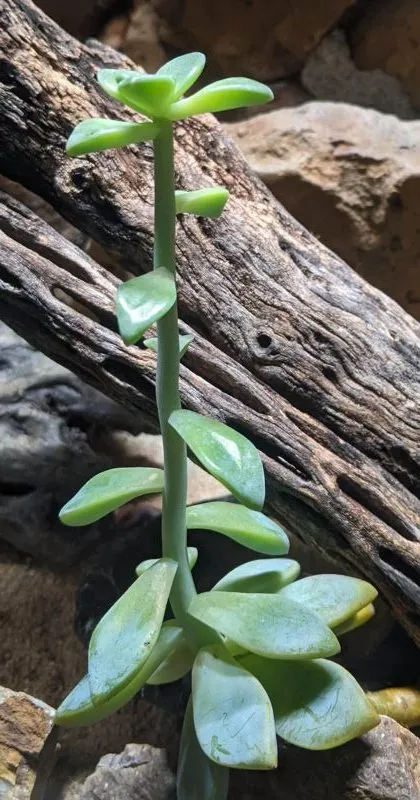
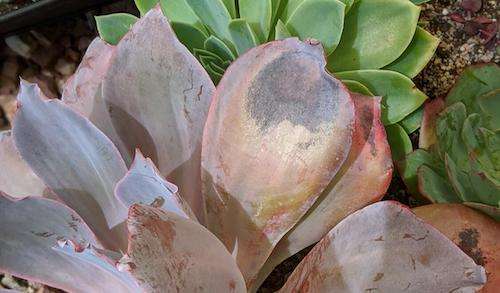
Signs Your Succulent is Getting Too Much Light
If your succulent gets too much sun, too quickly, it will burn. You’ll see rough, brown patches on the leaves which were previously beautiful and unblemished.
Sunburn on succulents is physical damage that can’t be reversed. You’ll just have to wait for it to grow out.
In the meantime, protect your succulent from further sun damage by putting it under an umbrella. Sun damaged succulents are more susceptible to pests and diseases because that tissue has become weakened.
It’s important to remember that even “full sun” succulents need a little bit of shade. Too much direct sun can cause the leaves to become sunburned, leading to unsightly brown patches on the plant. In extreme cases, too much sun can even cause the plant to die.
Succulent Light Needs
Natural Light vs. Artificial Light
Both natural and artificial light can provide the necessary energy for succulents to grow. While natural sunlight is the best source of light for these plants, artificial grow lights can be an effective alternative if you don’t have access to adequate sunlight.
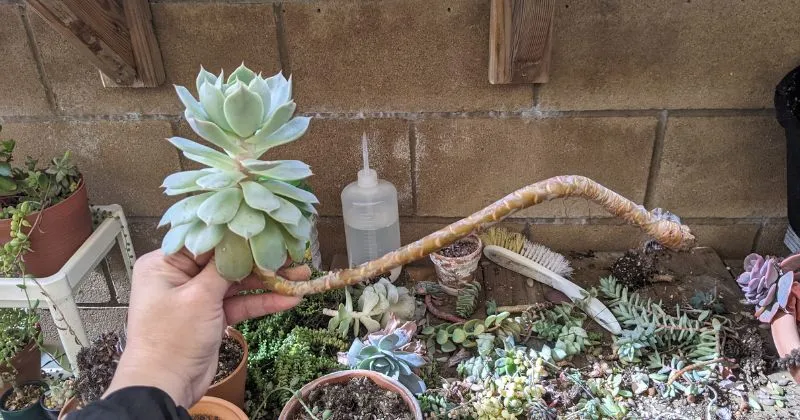
Ideal Light Conditions for Different Types of Succulents
Different succulents have different light requirements, with some needing more direct sunlight and others thriving in bright, indirect light. Research your specific succulent variety to determine its ideal light conditions and adjust its environment accordingly.
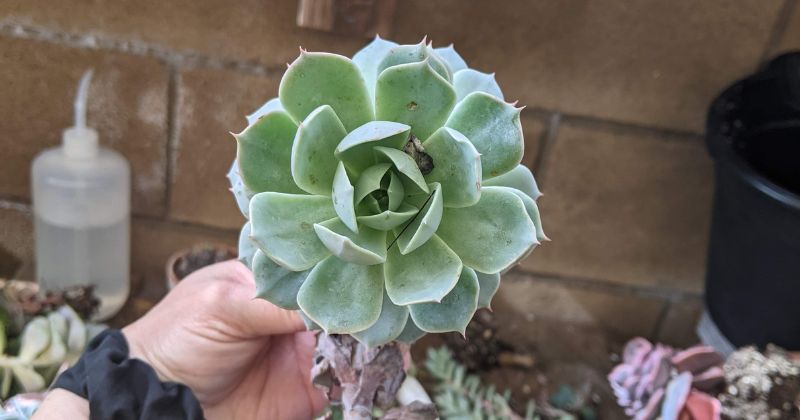
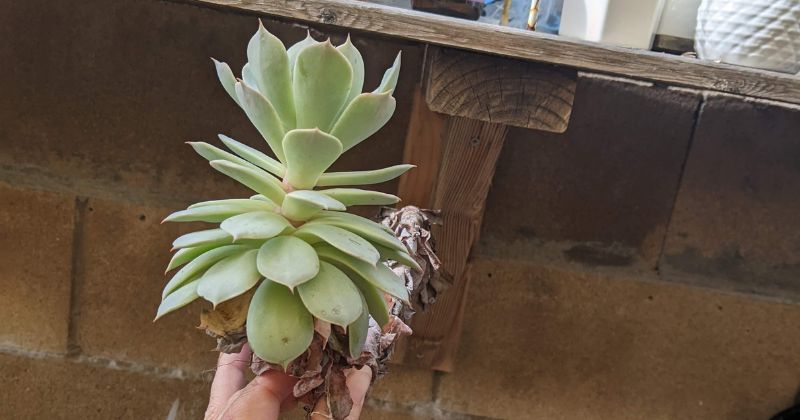
Succulent Sunlight
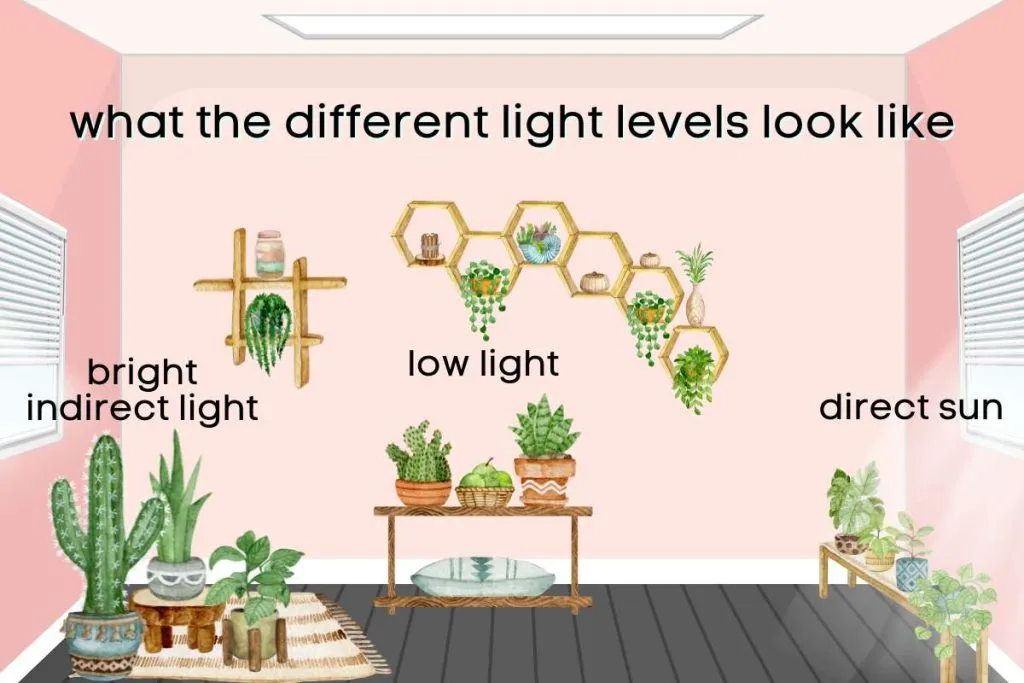
Direct Sunlight vs. Indirect Sunlight
Direct sunlight refers to sunlight that shines directly onto a plant without any obstructions, while indirect sunlight is filtered through objects like curtains or window panes. Some succulents require direct sunlight for optimal growth, while others prefer bright, indirect light to prevent sunburn.
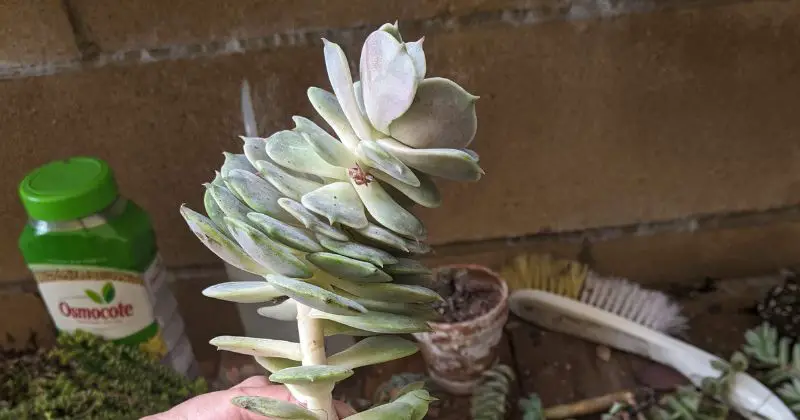
Observe and learn the sun exposure of different parts of your yard or house so you have an idea of where to move your succulents when they’re telling you they need more or less sun.
Adjusting to Different Sunlight Levels
When transitioning your succulent to a new light environment, acclimate it gradually to avoid shocking the plant. Start by placing the plant in its new environment for a few hours per day, and then gradually increase the duration until it’s fully acclimated.
Keep an eye out for signs of stress in your succulents, such as yellowing leaves or wilting. If you notice any of these signs, move the plant back to a spot with less light. It can take several weeks or even months for a plant to fully acclimate to its new light conditions. Be patient and give your succulents the time they need to adjust.
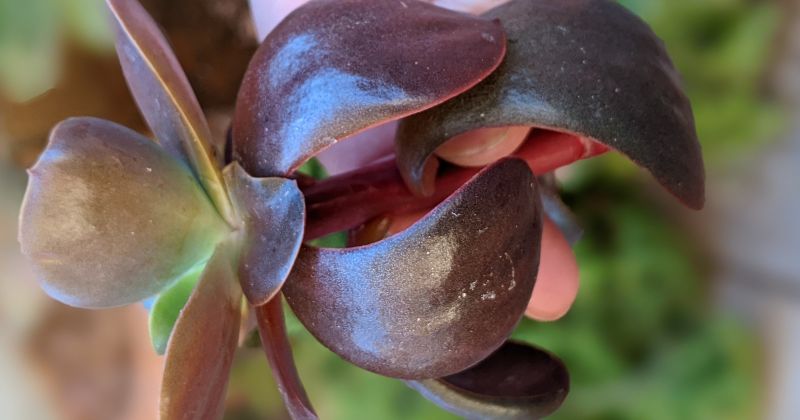
Definitions of Light Levels (Table)
| Light Level | Description | Suitable for |
|---|---|---|
| Full sun | Direct sunlight for 6 or more hours per day | Succulents that love heat and sun, such as Agave, Aloe, and Echeveria ‘Afterglow’ |
| Partial sun | Direct sunlight for 4-6 hours per day, or bright, indirect sunlight for most of the day | Succulents that can tolerate some sun, such as Haworthia, Kalanchoe, and Sedum |
| Filtered sun | Bright, indirect sunlight for a few hours a day, or dappled sunlight under a tree | Succulents that prefer bright but indirect light, such as Gasteria, Sansevieria, and Zebra plant (Haworthiopsis attenuata) |
| Shade | No direct sunlight, or only a few hours of very early morning or late afternoon sun | Succulents that prefer shade or low light, such as Snake plant (Sansevieria trifasciata) and Crown of thorns (Euphorbia milii) |
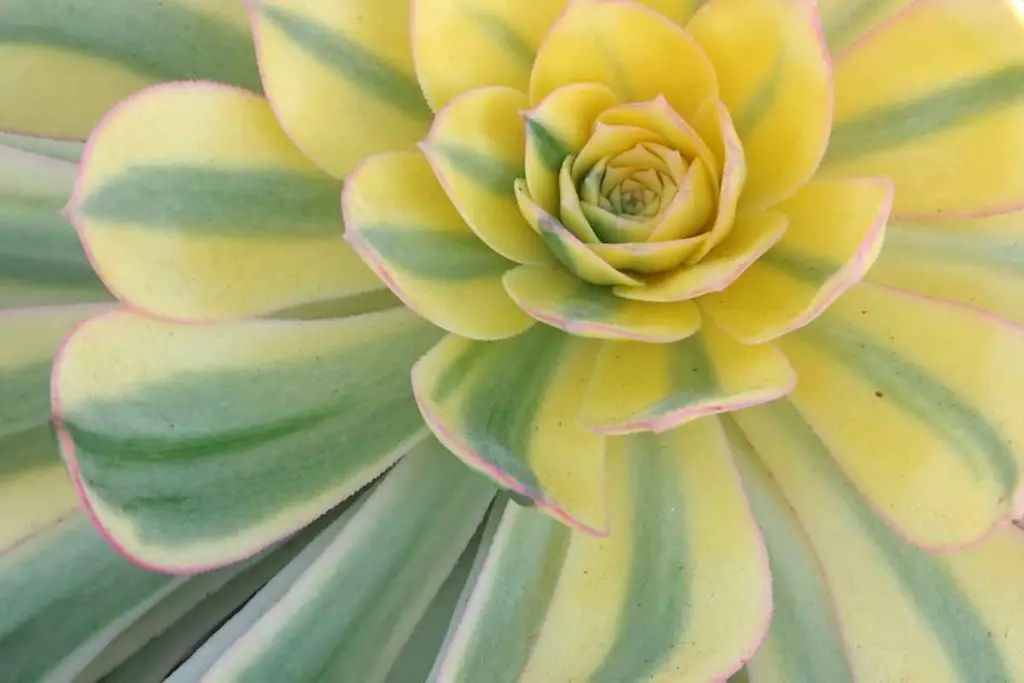
Keep reading for some more clarification on what people mean when they say that succulents need “bright, indirect light” or “indirect sunlight.”
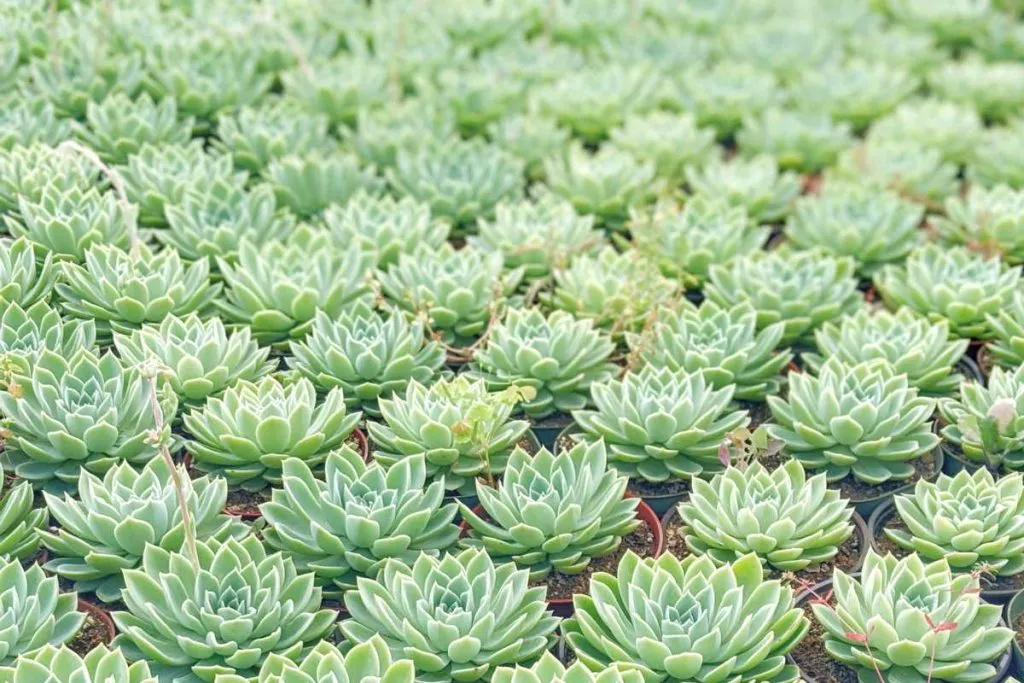
Compare and Contrast: Bright, Indirect Light vs. Indirect Sunlight for Growing Succulents
When it comes to growing succulents, understanding the differences between bright, indirect light and indirect sunlight is crucial. Both types of lighting conditions have their advantages and are suitable for different types of succulents. Let’s delve into the specifics of each:
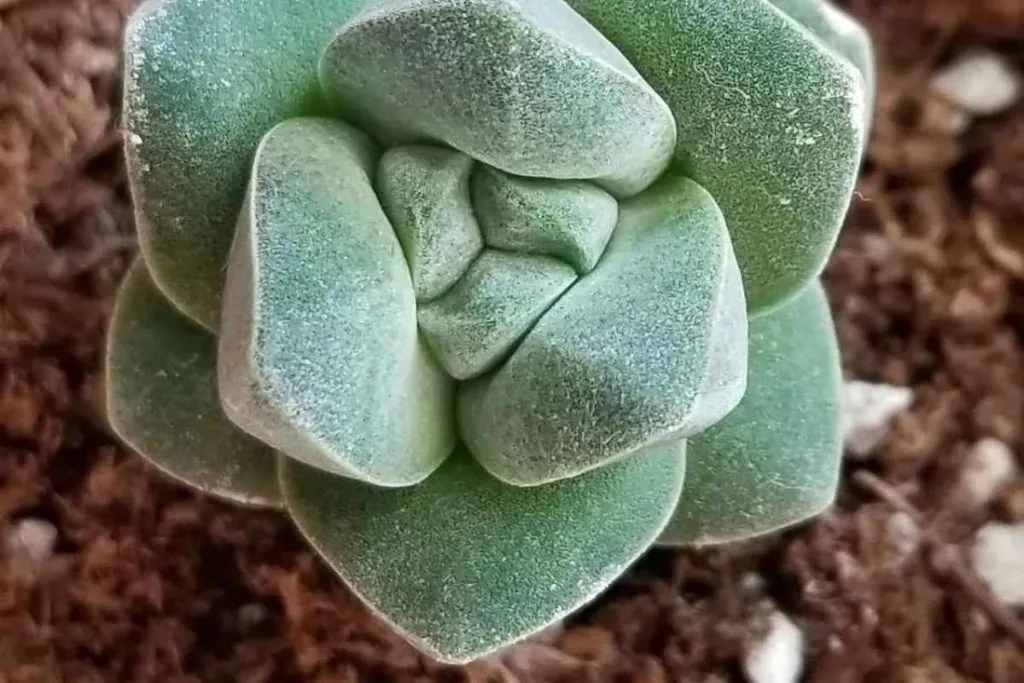
Bright, Indirect Light
Bright, indirect light refers to an area that receives ample natural light, but without direct exposure to the sun’s rays. This type of light is ideal for areas near windows, glass doors, or skylights that do not face directly south, east, or west. The intensity of this light is brighter than what you would find in a purely shaded location, but it remains gentler than direct sunlight.
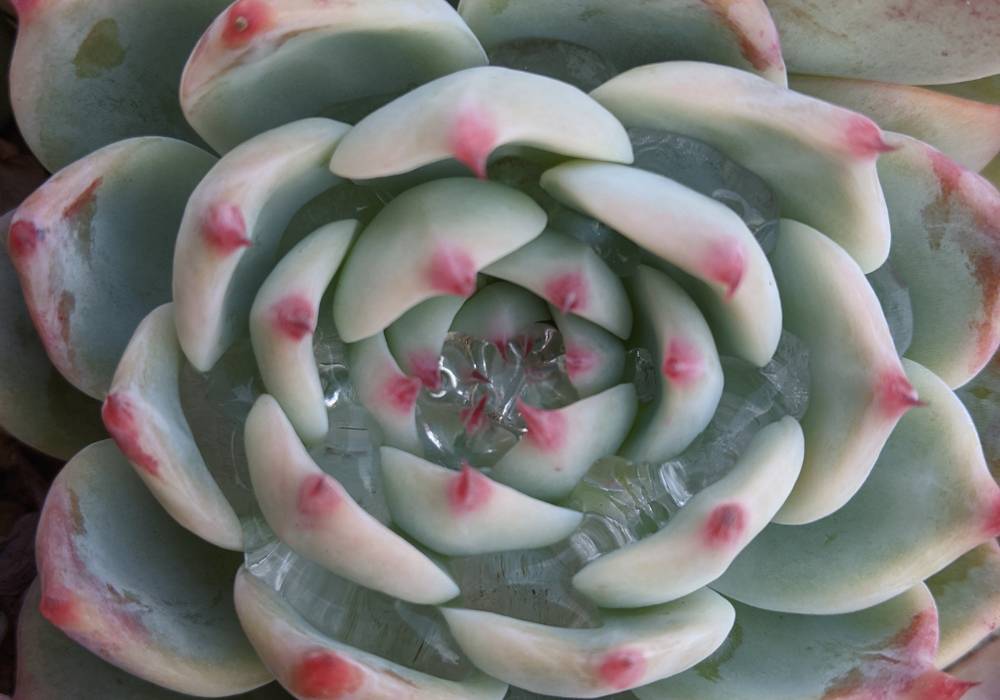
This lighting condition is particularly beneficial for sun-sensitive succulents that may get scorched or undergo changes in color when exposed to full sun. Some examples of such succulents include Echeveria and Haworthia.
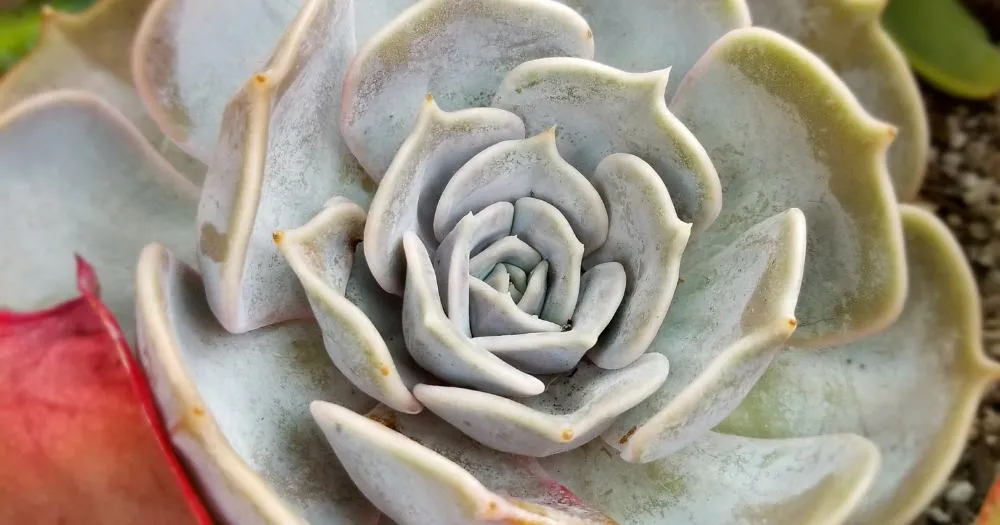
Indirect Sunlight
Indirect sunlight, on the other hand, describes an area that receives some direct sunlight during the morning or late afternoon, but remains shaded during the intense midday sun. You can commonly find this lighting condition under a canopy or when sunlight filters through leaves.
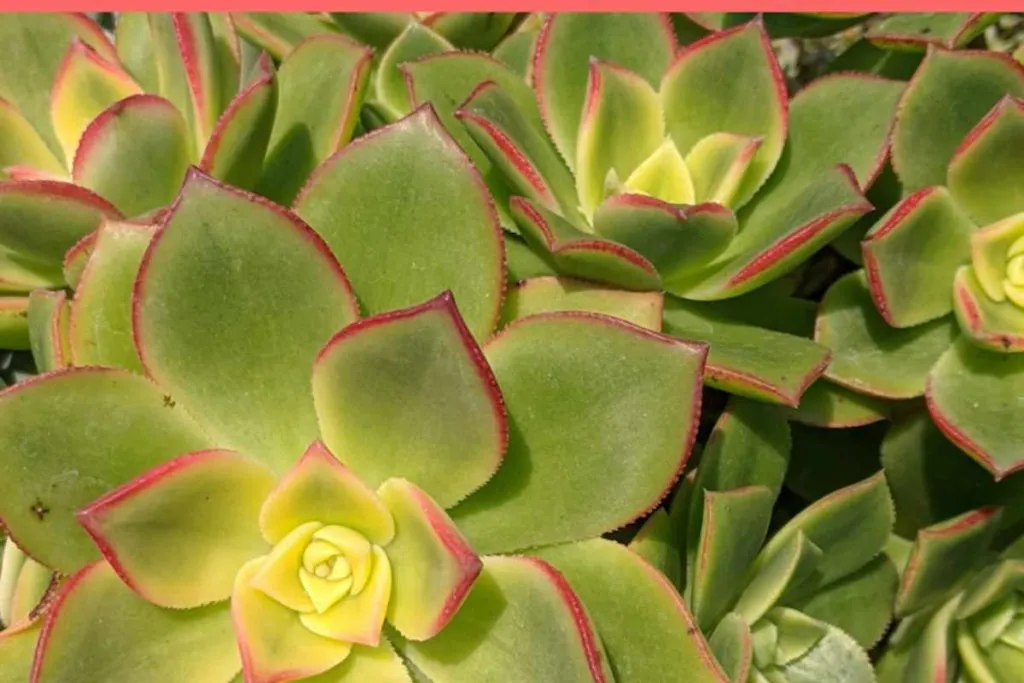
In addition to bright indirect light, this condition provides several hours of direct sunlight per day. It is suitable for most full-sun succulents that require some exposure to direct sun but also need protection from the harsh midday light. Some examples of succulents that thrive in indirect sunlight are Aeonium and Sedum.
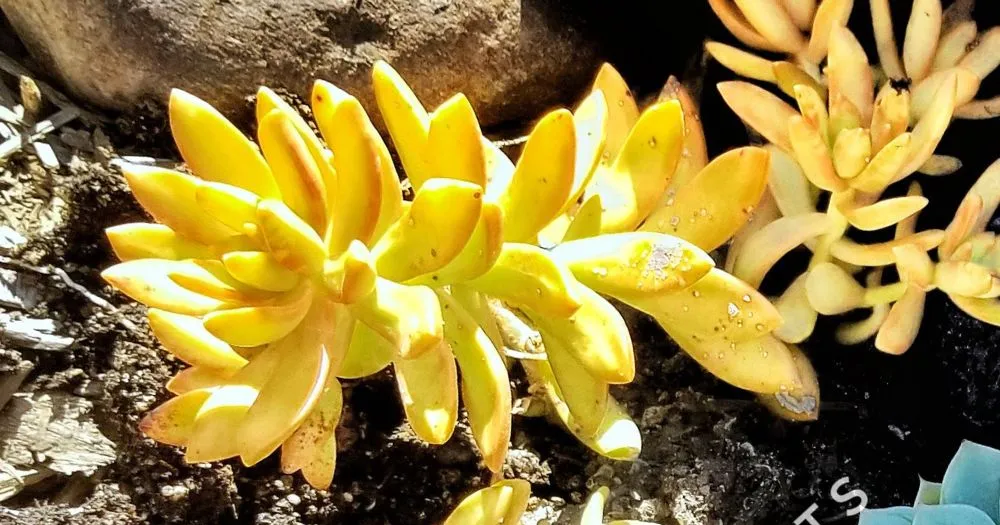
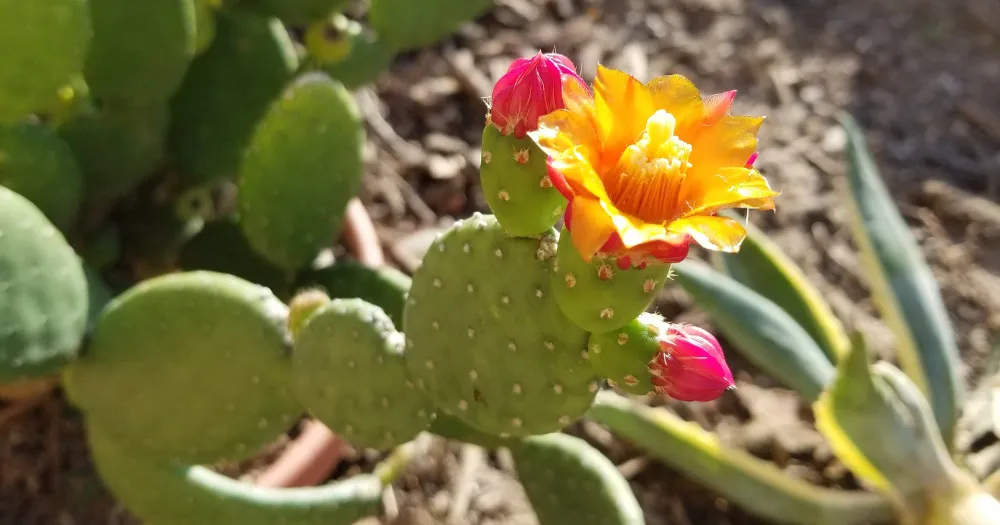
Cactus Needs Sunlight
How Much Sunlight Do Cacti Need?
Cacti typically need at least 4-6 hours of direct sunlight per day to thrive. However, the specific light requirements may vary depending on the type of cactus you’re growing. Always research the specific sunlight needs of your cactus to ensure it gets the proper amount of light.
Signs of Sunlight Deficiency in Cacti
Sunlight deficiency in cacti can result in symptoms such as weak, spindly growth, pale or discolored skin, and slow or stunted growth.

Growing Cactus Inside
Benefits of Indoor Cacti
Growing cacti indoors offers several benefits, including improved air quality, enhanced interior aesthetics, and easy maintenance. Many cacti are well-suited to indoor environments, making them an excellent choice for houseplants.

Ideal Indoor Cactus Varieties
Some cactus varieties that thrive indoors include the Christmas Cactus, Moon Cactus, and the Bunny Ears Cactus. These varieties are generally low-maintenance and can tolerate lower light levels than other cacti.

Low Light Succulents
Types of Low Light Succulents
Some low light succulents that can thrive in less sunny environments include Snake Plants, ZZ plants, and Haworthias. These plants are more tolerant of lower light conditions and can make excellent indoor houseplants.
Tips for Growing Low Light Succulents
To succeed with low light succulents, provide bright, indirect light and ensure the plants are in well-draining soil. Monitor their light needs and adjust as necessary to maintain healthy growth.

Growing Succulents Under Grow Lights
Grow lights provide the necessary light for succulents when natural sunlight is not enough. Artificial grow lights allow you to raise succulents year-round, no matter the climate or season. Grow lights make it possible to grow a thriving succulent collection even in basements, offices or other indoor spaces with limited natural light.
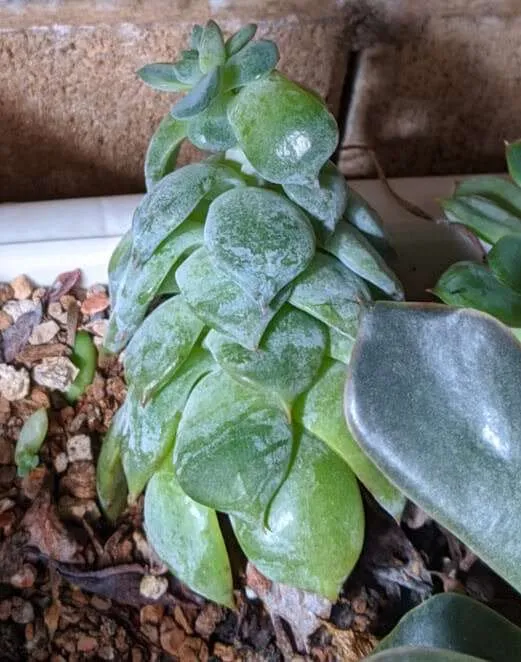
Choosing the Right Grow Light
The most common types of grow lights for succulents are fluorescent tubes and LED panels. Fluorescent tubes provide a broad spectrum of light but can be more expensive to operate. LED panels are more efficient and long-lasting but may be more expensive upfront. Choose a grow light that is rated for the type of plants you want to grow. Succulents generally need a grow light that emits 5000 to 7000 kelvin color temperature light.
Setting Up a Grow Light System
Place the grow light 6 to 24 inches above your succulents, depending on their size and how intense you want the light. Most succulents do well with 12 to 18 hours of light per day. Use a timer to easily adjust the light schedule. You can also use dimmers or adjust the brightness up or down as your succulents’ needs change through the seasons. Position the grow light so all plants receive even, diffuse light exposure.

Succulents and Artificial Light
While most succulents can do well with artificial grow lights, some prefer more natural light conditions. Succulents adapted to low light environments, such as echeverias and sedums, tend to do especially well with grow lights. Other succulents like jade plants, snake plants and Chinese evergreen can tolerate a wider range of light but may get leggy under intense grow lights.
Some succulents like Aloe and Crassulas do not handle artificial light well and should not be grown under grow lights long-term. Provide these succulents with bright natural light whenever possible.
Light Conditions for Succulents
Ideal light conditions vary from moderate to bright, depending on the type of succulent. Echeveria, Sedum and Jade Plants can do well in moderate light, while Euphorbias, Kalanchoes and Sempervivums prefer brighter light. Most succulents grow well with light that is at least as bright as a sunny window.
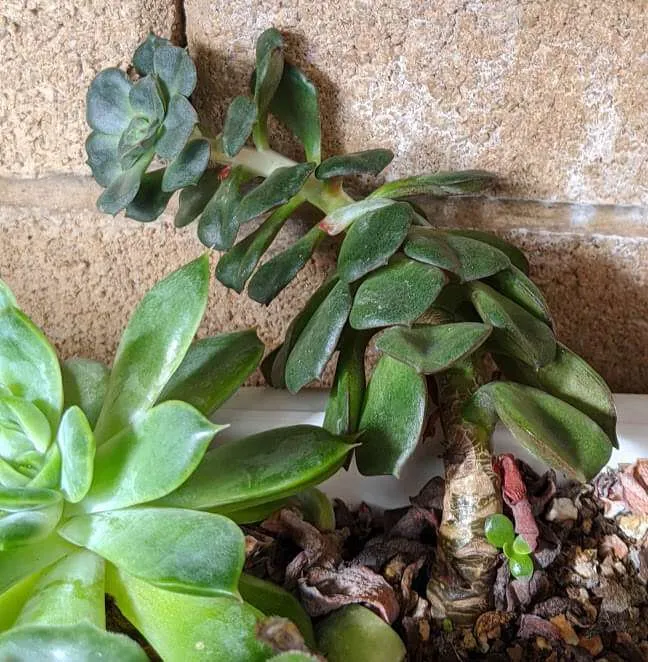
Adjusting Light Conditions to Meet Succulent Needs
You can adjust the light intensity for your succulents by changing the height or power settings of your grow light. Raising the light further from the plants will decrease the light intensity. Decreasing the power setting or switching to a lower wattage bulb will also provide less intense light.
Removing some plants from under the light will improve air circulation and allow for better light penetration to the remaining succulents. Selective pruning or repotting of dense succulent groups can provide better light access. Rotating plants under the grow light from time to time also helps ensure even exposure for all succulents.
Rotate Your Pots for Even Growth
If you want your succulents to thrive, rotating them regularly is a must. This simple practice helps ensure that all sides of your plants receive the light they need for balanced growth. But how often should you rotate your succulents? Here are some guidelines to follow:
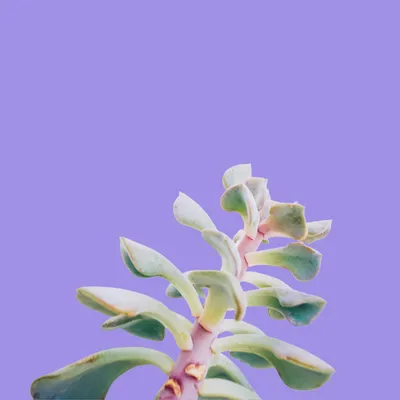
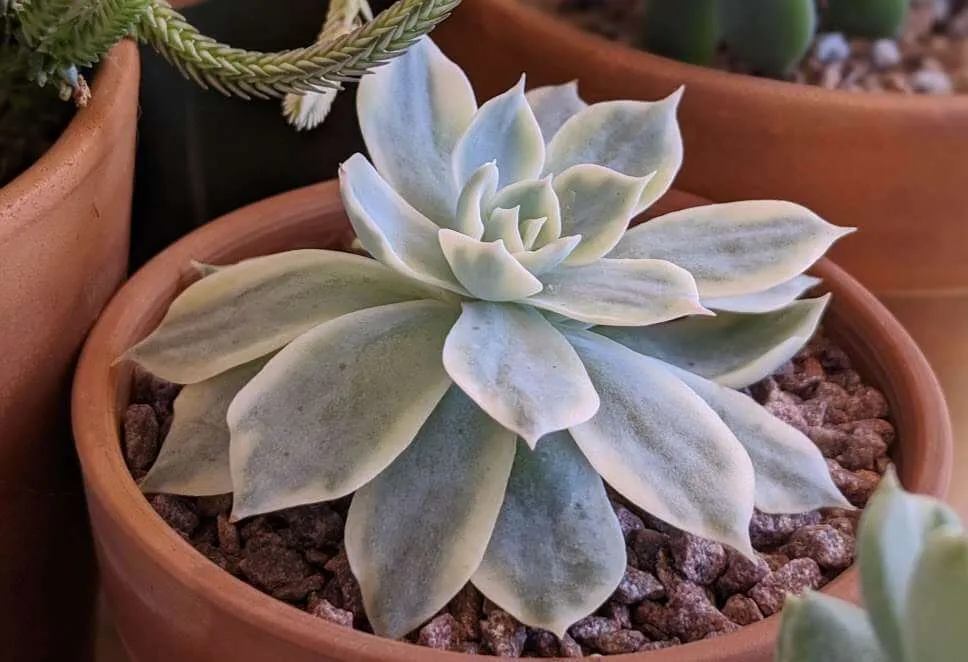
First, aim to rotate your succulents at least once a week. A quarter turn (that’s 90 degrees) should be enough for most lighting conditions. This gradual shift in light exposure can do wonders for your plants’ health and appearance.
However, if your succulents are basking in bright light, you may need to up the rotation frequency. In these cases, aim to rotate your plants twice a week (or every 3-4 days) to prevent leaf burn or uneven growth.
Now, when it comes to rotating potted succulents, it’s best to rotate the whole container instead of individual plants. This minimizes root disturbance and keeps your plants happy.
But how can you keep track of where you’ve rotated your plants? One trick is to mark the container with a little note or sticker. That way, you can rotate your plants by the same number of degrees each time and ensure even light for all sides.

Learning how much sun to give your succulents and cacti is a process of trial and error. Observe your succulents and learn the signs that they’re not getting enough sun. As soon as you see one of those signs, adjust the lighting situation by moving the succulent to a different location.
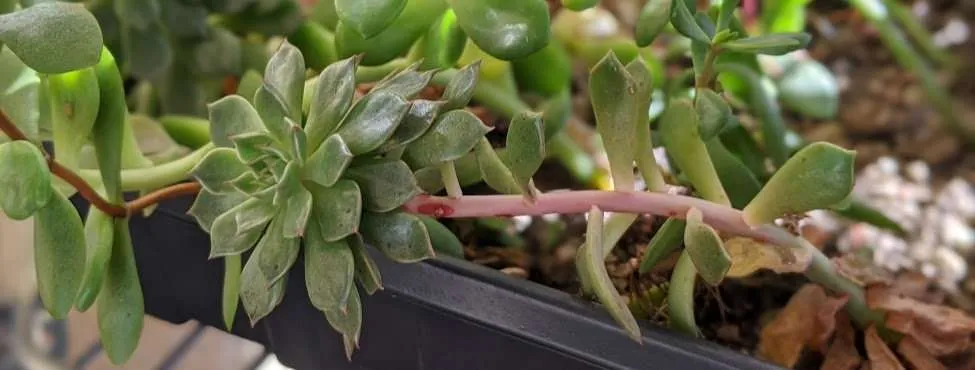
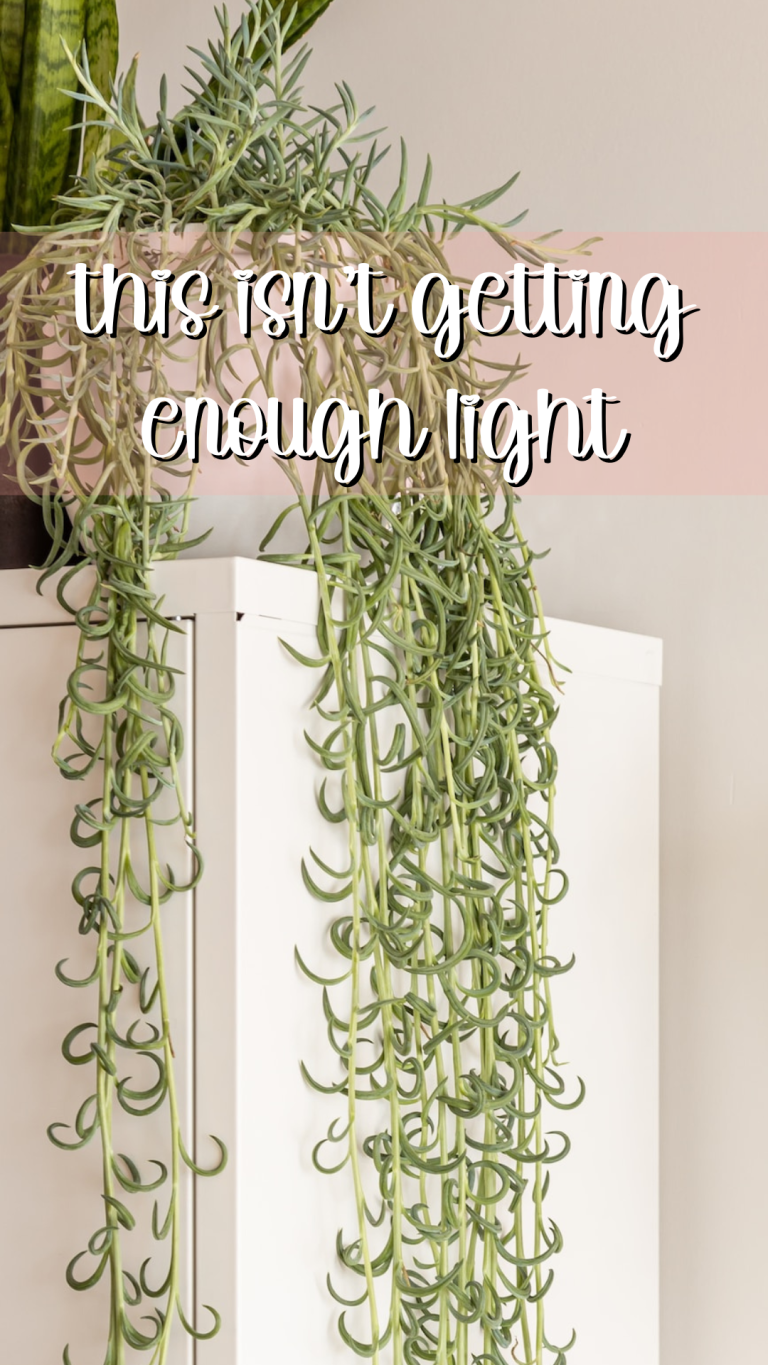
Photo by No Revisions on Unsplash
Bringing Out the Best in Your Succulents: Sun-Stressing 101
Have you ever seen succulents outside with bright, beautiful colors? This is because of something called sun-stressing. This is when a plant is exposed to a lot of sunlight and heat, which causes a special pigment called anthocyanin to activate. This pigment helps protect the plant from the sun’s harmful rays and makes it turn red or yellow. But, how can we do this safely for our succulents?
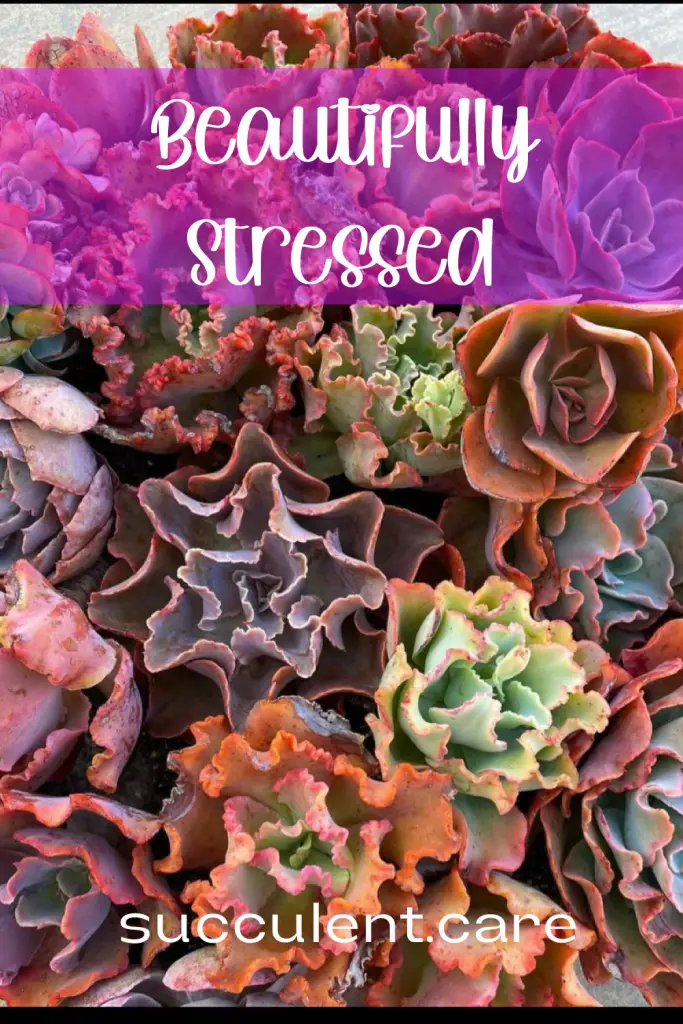
Outside Conditions are Best
To start off, when putting your succulents outside, it’s best to put them in a bright spot but not in direct sunlight for a week or so. This will help them get used to the change.
Acclimate to New Conditions
After that, you can move them into morning sunlight for a few hours a day for a few more days before finally putting them in full sun. You should start to see color in your succulents after a week or so. Remember, succulents like cacti and those that come from dry, hot places are best for this type of treatment.
It’s important to keep in mind that your succulents will need more water when they are outside because the sun and wind dry them out faster. But, too much water can also be bad for them. They are used to dry conditions.
Another thing to keep in mind is that as the weather gets cooler in the fall, your succulents might turn even more colorful. Just remember to bring them inside when the temperature drops below 45-50°F.
It’s important to keep an eye on your succulents while they are being sun-stressed. If the colors look washed out or the leaves have burns or look crispy, it means they are getting too much sun and should be moved to a shadier spot.
Overall, sun-stressing is a great way to bring out the best colors in your succulents but it’s important to do it safely by gradually moving them into the sun and keeping an eye on them.
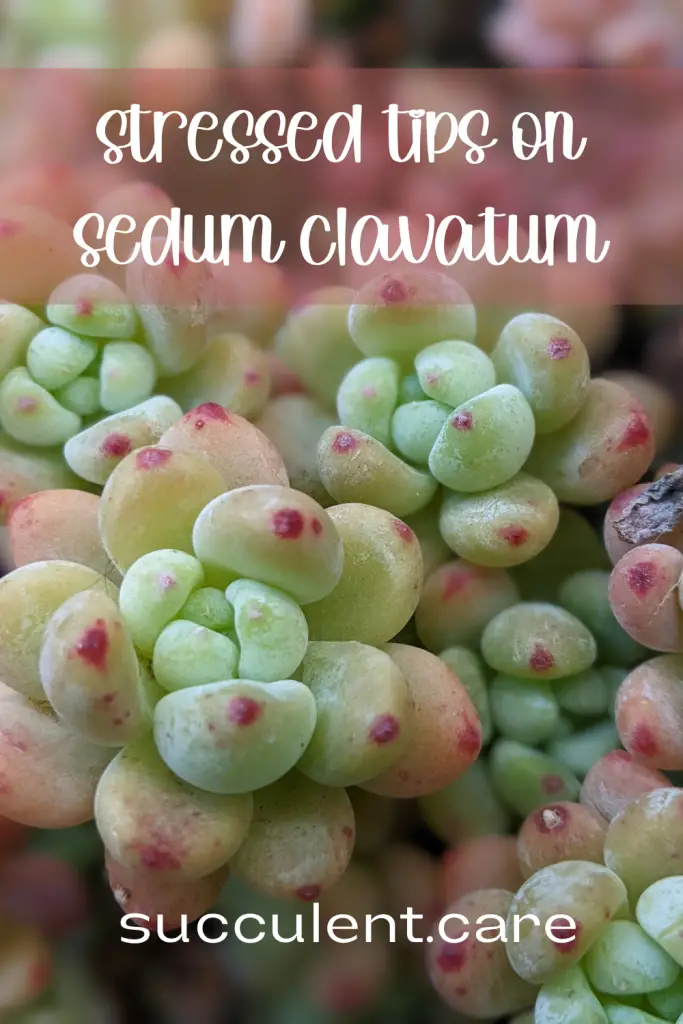
Effects of Different Light Levels
Echeveria prolifica
I’m currently preparing to completely revamp my succulent fountain and trying to condense my collection as much as possible. One of my favorite succulents is Echeveria prolifica and one of the items on my to do list was to plant them in a wide planter so that they could throw out their pups with plenty of room to root.
While planting the Echeveria prolifica cuttings, I was pleasantly surprised to see how different they looked depending on the location and amount of sun they received.
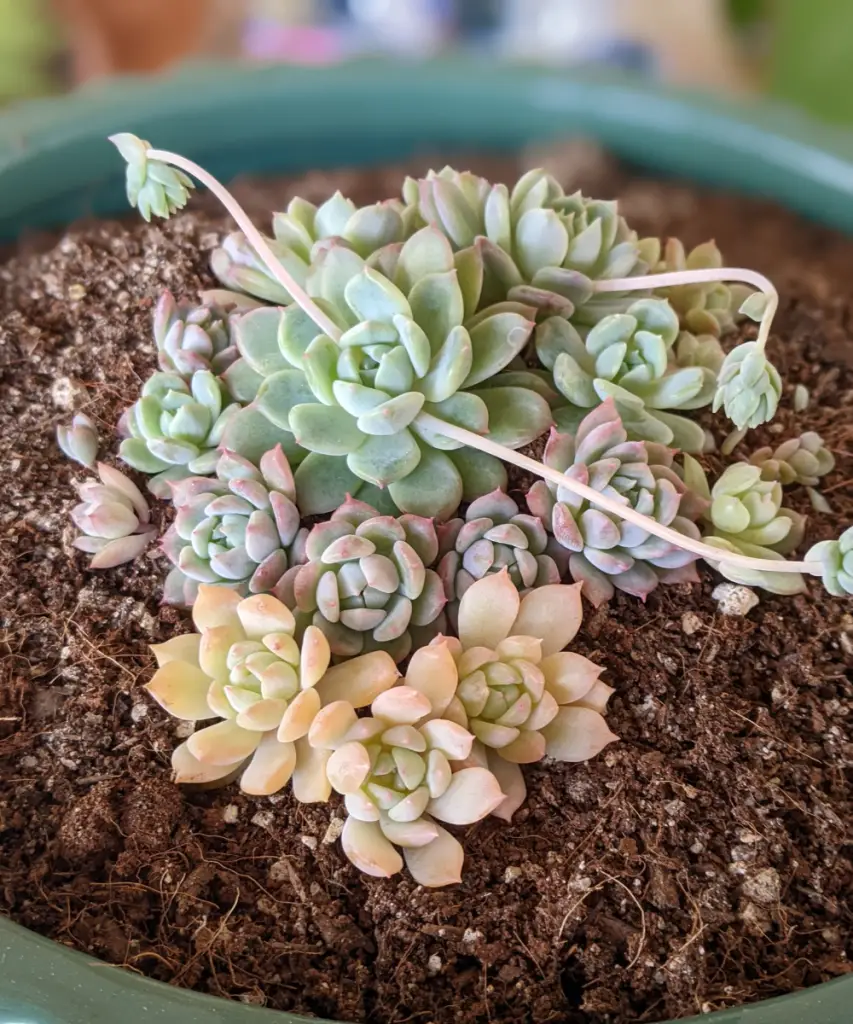
Kalanchoe fedtschenkoi ‘Lavender Scallops’
